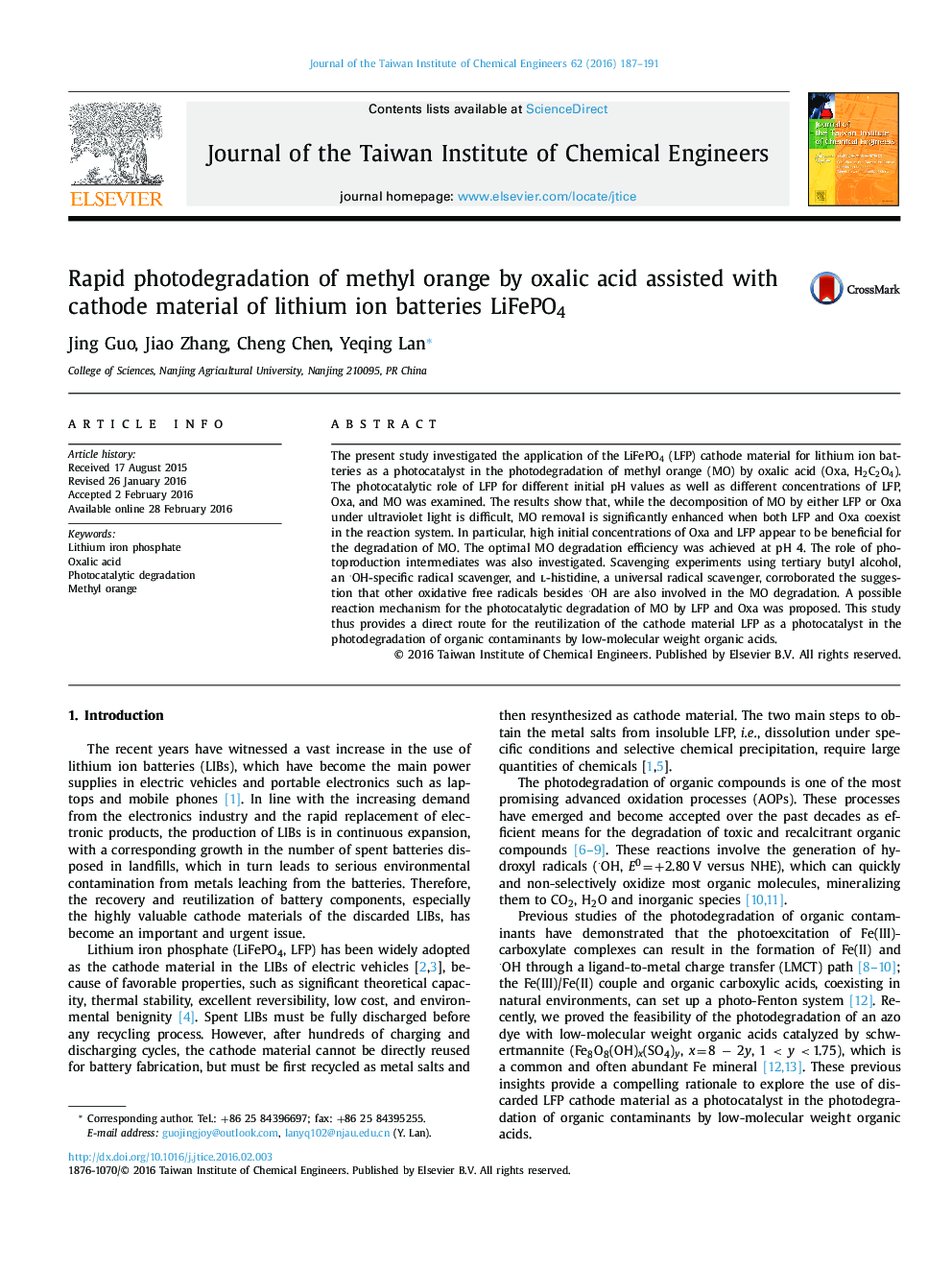| کد مقاله | کد نشریه | سال انتشار | مقاله انگلیسی | نسخه تمام متن |
|---|---|---|---|---|
| 690320 | 1460412 | 2016 | 5 صفحه PDF | دانلود رایگان |

• Cathode material of lithium ion batteries can be adopted as photocatalyst for the degradation of azo dyes.
• Photodegradation of MO by oxalic acid was significantly enhanced in the presence of LiFePO4.
• Optimal degradation efficiency of MO in the presence of oxalic acid and LiFePO4 was achieved at pH 4.
• Experiment of radical scavengers corroborated the oxidative radicals responsible for MO degradation.
The present study investigated the application of the LiFePO4 (LFP) cathode material for lithium ion batteries as a photocatalyst in the photodegradation of methyl orange (MO) by oxalic acid (Oxa, H2C2O4). The photocatalytic role of LFP for different initial pH values as well as different concentrations of LFP, Oxa, and MO was examined. The results show that, while the decomposition of MO by either LFP or Oxa under ultraviolet light is difficult, MO removal is significantly enhanced when both LFP and Oxa coexist in the reaction system. In particular, high initial concentrations of Oxa and LFP appear to be beneficial for the degradation of MO. The optimal MO degradation efficiency was achieved at pH 4. The role of photoproduction intermediates was also investigated. Scavenging experiments using tertiary butyl alcohol, an ·OH-specific radical scavenger, and l-histidine, a universal radical scavenger, corroborated the suggestion that other oxidative free radicals besides ·OH are also involved in the MO degradation. A possible reaction mechanism for the photocatalytic degradation of MO by LFP and Oxa was proposed. This study thus provides a direct route for the reutilization of the cathode material LFP as a photocatalyst in the photodegradation of organic contaminants by low-molecular weight organic acids.
Figure optionsDownload as PowerPoint slide
Journal: Journal of the Taiwan Institute of Chemical Engineers - Volume 62, May 2016, Pages 187–191